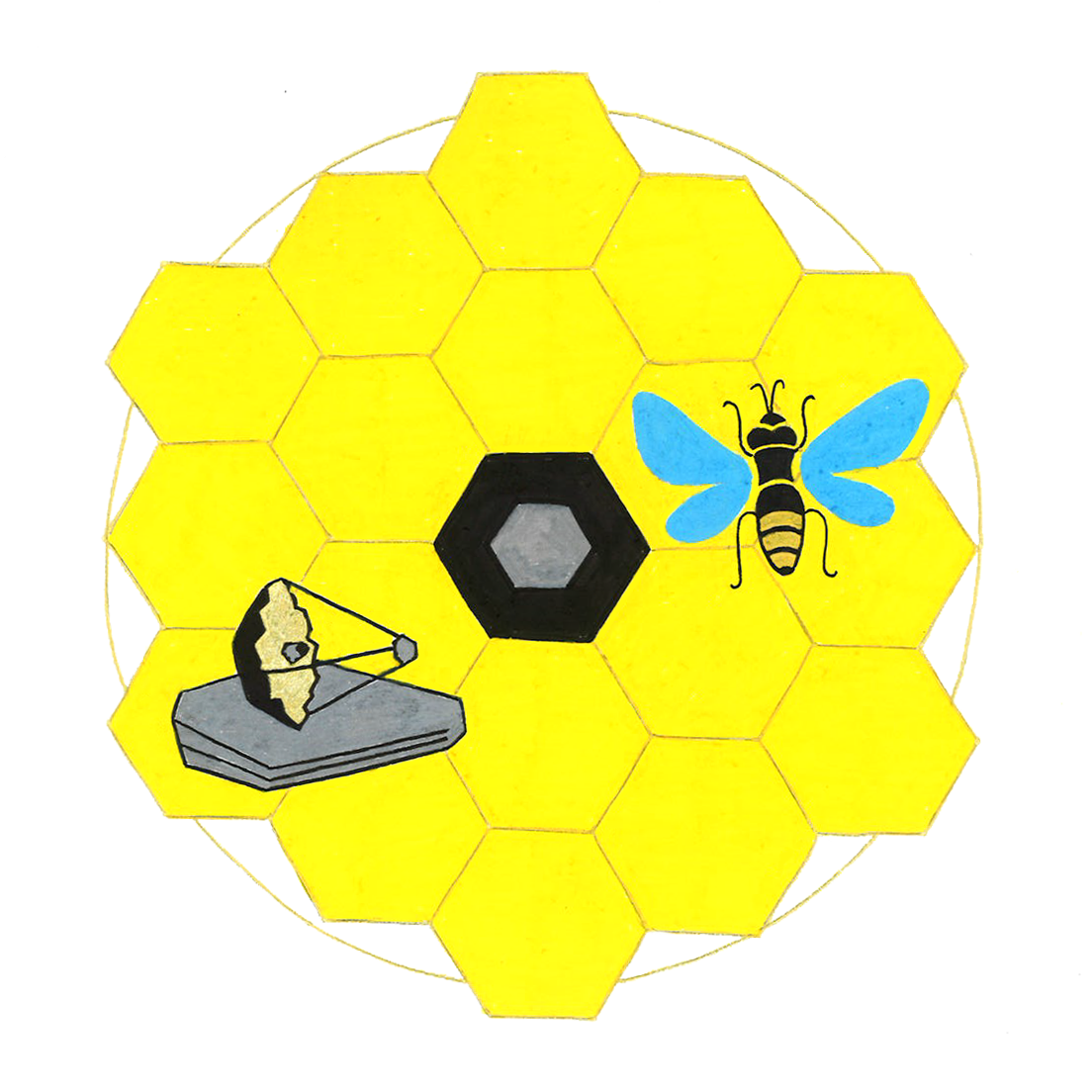Posts from December 2021
Rewrite the history of the Cosmos
Leiden, the Netherlands
It takes a planet to explore the Universe.
The process of research is never linear. To keep this line of thought alive, I will also let the current blog take a little bit of a turn. While I expected to tell more about my own research projects in the past month, the launch of the James Webb Space Telescope became slightly too exciting!
After 25 years, the time had come. On Christmas morning, my family was aware of the importance of the James Webb Space Telescope for astronomers and we all sat in front of the television, watching the NASA livestream. Everyone held their breath during the last 10 seconds to 13:20, only to then see Ariane-5 disappear into the clouds in a sigh of relief. Seconds later, the mobile phone is glowing with the messages: "Merry Christmas”. After all, this Christmas, all astronomers received a wonderful Christmas present: a successful launch of the James Webb Space Telescope.
James Webb Space Telescope • Learn more about the Cosmos with the James Webb Space Telescope
The James Webb Space Telescope, which originally was known as the Next Generation Space Telescope, wrote history before it was even launched. Where the original 'simple' design began as a 500 million project taking only 11 years to complete, it has evolved into an astronomically complicated 10 billion project that required thousands of researchers from more than 300 institutes to finish and prepare for launch. What makes the telescope so extraordinary and complex?
- Gigantic: It is the biggest space telescope ever. The entire telescope is as tall as a three-storey flat and as wide as a tennis court. Since the Ariane rocket body is 'only' 4.5 metres wide, the telescope was designed to be folded in origami-style to fit inside the rocket. Once in space, the telescope unfolds.
- Honeycomb: The primary mirror is made up of 18 golden individual hexagonal mirrors, each of which is almost 1.5 metres tall. Obviously, everyone currently knows exactly how tall 1.5 metres is. Combined, the mirrors form one single large mirror that is no less than 6.5 metres tall and wide.
- Smooth: The surface of the individual mirrors should be so smooth that, if the entire surface of the mirror were as large as Europe, there should not be any hills or valleys higher than an ankle's height.
- Solar protection: A solar shield is meant to protect the telescope from infrared radiation coming from the Sun, the Earth and the Moon. In this way, the shield forms a barrier between the solar and shadow sides, which have a temperature of about 110 °C and about -230 °C respectively. It is like using sunscreen, only then with a sun factor of 1 million. In order to form this barrier, the sunshield consists of 5 separate layers. Each layer is made of Kapton and is as thin as a single human hair.
- Powerfull: Webb is 100 times as powerful as the Hubble Space Telescope. Webb can capture light from objects created 100 million years after the Big Bang. These new discoveries will reveal what the primordial stars looked like 13.7 billion years ago. Until now, the record for observing the oldest and most distant object has been set by Hubble. This object was located at a distance of no less than 13.4 billion years.
- Unreachable: After the first observations made with Hubble, it appeared that the first mirror of the telescope had an optical aberration problem. Hubble orbits the Earth at a distance of about 570 kilometres. This made it possible for astronauts to repair Hubble while it was in orbit. For Webb this will not be a possibility. Webb will be heading towards the Sun-Earth L2 point which is 1.5 million kilometres from Earth and in line with the Sun. This is almost 4 times the distance between the Earth and the Moon. While it takes Webb only 3 days to travel the distance to the Moon's orbit, it will take Webb 30 days to reach the L2 point. Consequently, the telescope cannot be reached when optical aberrations occur. At least, not with today's technology.
For many astronomers, the observations of the James Webb Space Telescope promise to be very valuable. Personally, I am mainly interested in the search for the building blocks of life elsewhere in the Universe. Webb will give us more insight into the constituents of the atmospheres of extraterrestrial planets orbiting stars other than our Sun. In these atmospheres we look for example for water, oxygen, ozone, methane, phosphine, and in particular certain combinations of these atmospheric gases. With particular mixtures of these gases, we are trying to find life as we know it on Earth today.
December 31, 2021

